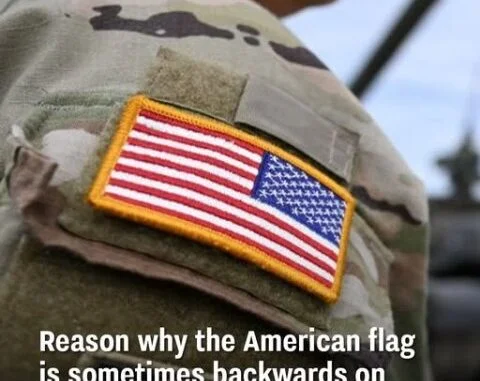
Why Some U.S. Flags Look “Backwards” on Military Uniforms — The Powerful Story Behind It
If you’ve ever noticed a U.S. flag patch on a soldier’s right shoulder and thought, “Wait… is that backwards?” — you’re not alone.
Many people assume it’s a mistake. But the reversed flag design is actually intentional, deeply symbolic, and rooted in both tradition and military pride.
🇺🇸 What the Flag Code Says
According to U.S. military regulations and the Flag Code, the field of stars (the “Union”) must always face forward, symbolizing advancement and honor. This positioning makes the flag appear as if it’s moving forward in battle, rather than retreating.
Imagine carrying a real flag while running into action — the stars would naturally be at the front, with the stripes flowing behind. That same idea applies to how the flag is worn on uniforms.
🪖 The Battlefield Legacy
The tradition can be traced back to the Civil War, when flag bearers led troops into battle. Later, during World War II, American paratroopers began wearing the reversed patch to distinguish themselves behind enemy lines. It became a symbol of courage and forward momentum.
In 2003, the U.S. Army officially adopted the “backward” flag patch to appear on all right shoulders, ensuring the flag would always appear to be charging forward — never retreating.
💬 As one soldier put it:
“The stars should always lead. A flag in retreat is a country in retreat. That’s not who we are.”
So next time you see that reversed flag, remember — it’s not an error. It’s a statement.
